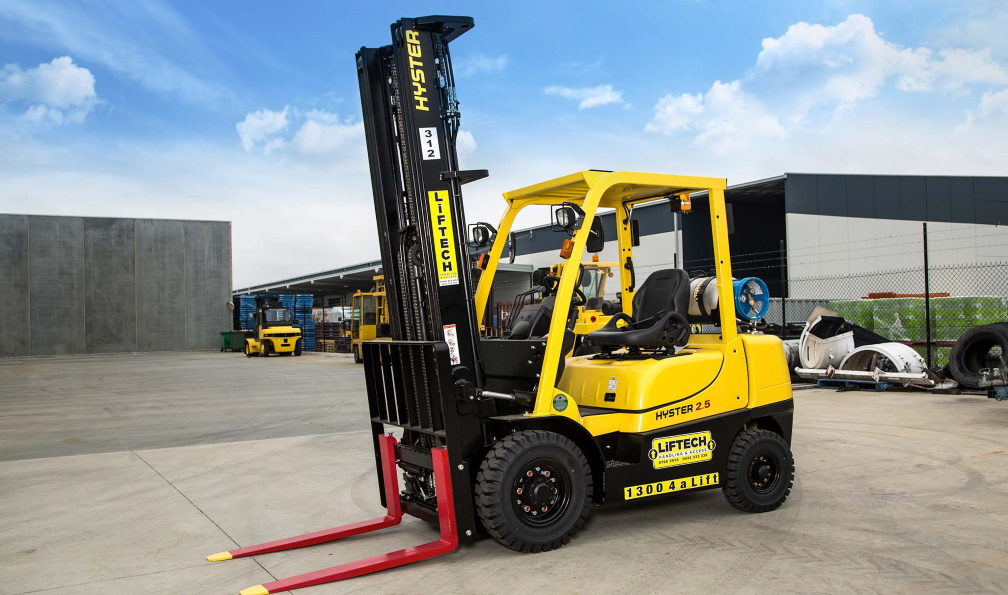Things You Should Do To Prevent Forklift Accidents
- Written by NewsServices.com

Use the following tips in accident prevention:
-
Seek and obtain proper training
One of the most common reasons behind forklift accidents, it’s important that you know what you’re doing every step of the way. Forklifts can be dangerous in the wrong hands, which is why you need to take your Cherry Picker Forklift Training seriously. If you’re not confident in your abilities, you need to step away from the machine and seek assistance. -
Wear proper protective equipment
It may not be the most fashionable thing in the world, but personal protective equipment (also known as PPE) is essential for protecting yourself against accidents. From hard hats and steel toed boots to hi vis jackets, you should also avoid loose clothing that could become caught in the equipment and cause serious injury. -
Inspect the forklift prior to use
You should have a daily inspection checklist that you go through each time you use the machine to ensure that it’s safe to operate. Check for leaks, the tire pressure, make sure that the brakes and horn are working, and look for signs of overheating. We also recommend lifting, lowering and tilting it prior to operation. -
Exercise caution when loading
Did you know that approximately 14% of forklift accidents occur because the machine’s tines have been improperly loaded? The design of this machine means that it has a low centre of gravity and is very easy to overload - ensure that you know the proper way to load it. It’s also important that you’re careful not to overload it, as this can lead to tipping over. -
Drive responsibly
Forklifts are meant for working, not for horseplay. In order to avoid accidents, it’s important that you’re serious when using it. Not only could you hurt yourself, you could potentially hurt someone else if you’re not being careful. Keep an eye on the people around you, as the only thing you can control is your own reactions. -
Don’t be afraid to use your horn
Forklifts are equipped with horns for a reason – use it as you go through intersections, but it can also be of assistance when dealing with a blind spot and to alert someone who isn’t paying attention to you (if a passers-by's attention is elsewhere, they could run right into you – or you could run right into them). -
Use a spotter if necessary
Visibility isn’t always the greatest when it comes to forklifts, as the load is raised in front of your line of sight. Even when driving backwards, you may need a spotter to help you navigate around tight spots and congested areas. It might be inconvenient to use a spotter, but safety should be more important. -
Proper parking
Whenever you’re finished using the forklift, ensure that you secure it properly and remove the keys. This will prevent passers-by from accidentally walking into it, as well as remove the temptation for joyriding. Take your time when parking, as you need to ensure it’s adequately prepped for the next person to use it. -
Travelling at speed
Although this point could be linked to driving responsibly, it isn’t uncommon for drivers to travel at high speeds when they become comfortable on the forklift. Keep in mind, however, that travelling too fast actually shortens reaction times and can lead to accidents. It can be tempting to get the job done faster, but resist it. -
Insufficient warnings and markers
Ensure that your workplace is equipped with ample signage and floor markings; these are one of the best ways to prevent accidents involving passers-by. Mark aisles, pedestrian walkways, ledges, traffic flow and hazard areas. Floor tape and signage is a great option, as it’s easy to apply and incredibly durable. -
Effective workplace design
When purchasing or hiring a forklift, you should always consider the layout of your facility – the machine needs to be appropriate for the space it’s being used in. If you’re dealing with minimal aisle space, for example, you should invest in a narrow model. No matter the design of your workplace, keep it as clean as possible. -
Potential mechanical failure
The weight of a forklift and whatever load it’s carrying can lead to mechanical failures, which can lead to major accidents and injuries. On top of performing your daily checklist to ensure the machine is in safe working order, keep an eye on any potential issues and ensure that you get them rectified by a mechanic immediately. -
Operating with an elevated load
This is an issue we see all too often – driving with an elevated load makes it hard to see and the forklift harder to control, which can lead to crashes and tipping. It’s important to always keep the tines low – Occupational Health & Safety regulations encourage drivers to carry loads as close to the ground as possible (around 4 inches off the ground). -
Unbalanced or unsecured loads
Another common cause of tipping is unbalanced or unsecured loads – both of these can cause things to go sideways fast. When loading your forklift, ensure that the load is always secured and properly balanced on the tines. To make it ever safer, you should angle the forks up so that the load is directed back towards the machine.
At the end of the day, one of the best ways to prevent forklift accidents is by undertaking the proper training and using some common sense. Don’t take unnecessary risks, exercise caution when navigating the unknown and keep an eye on your colleagues to ensure that they’re doing the same. Don’t hesitate to reach out for help if you’re ever unsure.








